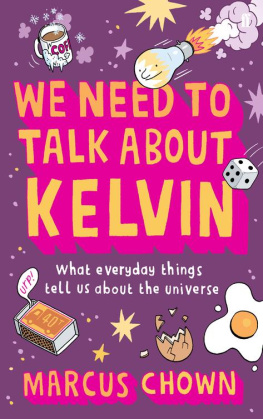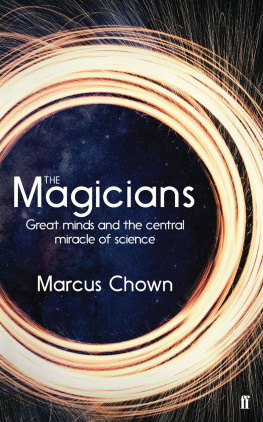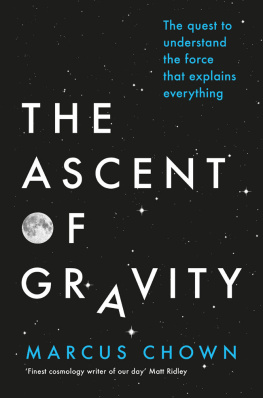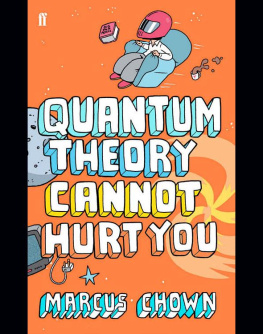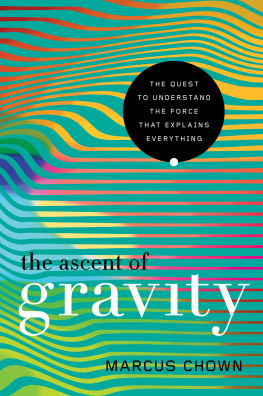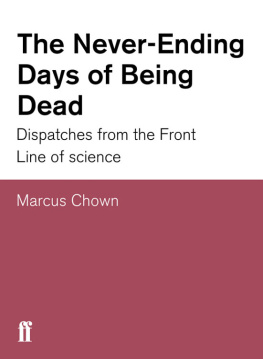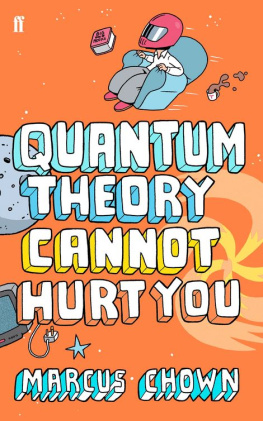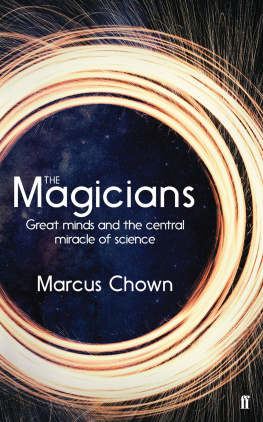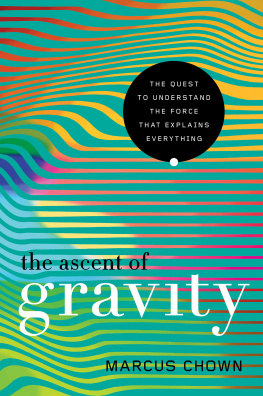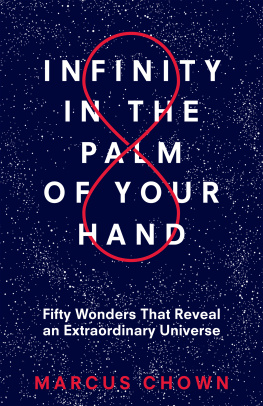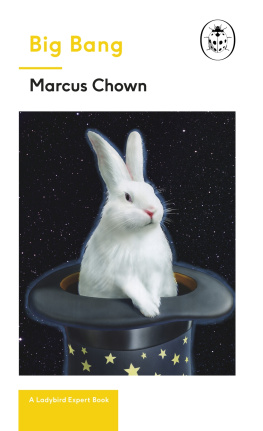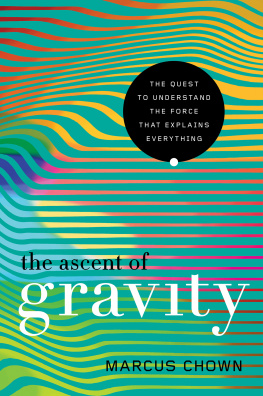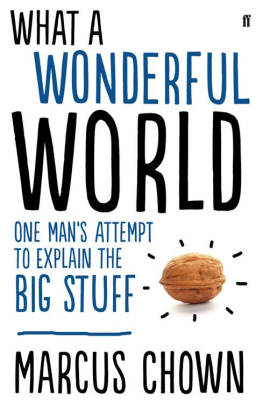To see a World in a Grain of Sand
And a Heaven in a Wild Flower,
Hold Infinity in the palm of your hand
And Eternity in an hour.
William Blake
(Auguries of Innocence)
The idea of this book is simple: to take familiar features of the everyday world and show how, in the light of our current scientific knowledge, they tell us profound truths about the ultimate nature of reality; to read the cosmic signs in the everyday world. Or, in the words of William Blake, To see a World in a Grain of Sand or a falling leaf or a rose or a starry night sky For instance:
The reflection of your face in a window tells you about the most shocking discovery in the history of science: that at its deepest level the world is orchestrated by random chance; that ultimately things happen for noreason at all.
The fact that iron is common in the steel of the cars we drive, the framework of the buildings we work in, even in the blood at this moment coursing through your veins tells you that somewhere out in the depths of space there must exist a blisteringly hot furnace at a temperature of about 4.5 billion degrees.
The fact that there are no aliens on Earth either loitering on street corners, flying angelically through the sky above, or materialising and dematerialising like crew members of the starship Enterprise tells you well, we dont actually know what it tells you. It could be that we are the first intelligence to arise in our Galaxy, possibly the whole Universe, sentenced to cosmic solitary confinement on Earth with no one else to talk to. Or it could be that the Universe is so dangerous a place that every space-faring race is wiped out before it can come our way. This is the one everyday observation where frankly your explanation is as good as mine.
The idea to write about what the everyday world can tell us about the Universe came to me in the publicity phase between books. Being an author is an all-or-nothing existence. Much of the time, I am locked away with only George and Reg the goldfish for company (sadly, Laura passed away during the writing of this book). For a brief time, however, when doing publicity, I get out and about and actually meet people in a whirl of sociability. And the skill required to publicise is entirely different to that required to write a book. In radio interviews, I have at most a few minutes to convey something that will lodge in the mind of listeners. In public talks, most of the audience may not have a science background. So I am continually grasping for new, visual, snappy ways of saying things. And one thing I suddenly realised while doing this an obvious thing, really is that, in talking to non-scientists, I tend to latch onto an everyday observation, then relate it to the deep physics it exemplifies.
At the 2008 Edinburgh Science Festival, for instance, I needed to highlight the basic paradox that leads to quantum theory, our best description of the microscopic world of atoms and their constituents. So I drew peoples attention to a light bulb in the auditorium and pointed out how the light waves that emerge from it are about 5,000 times bigger than the atoms themselves. I then took a matchbox from my pocket and said, Say I opened this matchbox and out drove a 40-tonne truck. Thats what its like for light streaming out of that light bulb.
And one day, a light bulb did go on in my head. I suddenly thought, Why dont I write a book in which each chapter takes an everyday observation of the world and points out the profound thing it tells us about ultimate reality? Simple as that. Why had I not thought of that before? Suddenly, I could see all sorts of things I wanted to write about coming together. It was a powerful unifying thread.
I was excited. But I was also worried that I might repeat myself. I hope, however, that although I do return to things I have talked about in previous books such as The MagicFurnace and Quantum Theory Cannot Hurt You, I have deepened the discussion, shown things in a new light. A good example is the 400-year-old mystery of why the sky is dark at night. Like 99 per cent of astronomers, I used to think the blackness at midnight is telling us that the Universe has not existed for ever but was born that the evidence for the Big Bang has been staring us in the face since the dawn of human history, had we only the wit to recognise it. I may even have said this in my book Afterglow of Creation. Now I realise that the darkness at night is not telling us that at all. Most astronomers are wrong. And, bizarrely, it was Edgar Allan Poe, of all people, who was the first person to catch a glimpse of the truth.
Another example of something I return to but elaborate on is the boundless variety of the world we live in. Ultimately, this is due to the Pauli exclusion principle, which prevents electrons piling on top of each other and, by doing so, is responsible for there being many types of atom rather than a single kind. I was aware that, in Quantum TheoryCannot Hurt You, I had fallen short of a complete explanation. I managed to show how nature permits two indistinguishable particles to behave in two distinct ways: to be either gregarious or antisocial. I then said that nature avails itself of both possibilities. Particles with a particular type of spin turn out to be antisocial like electrons whereas particles with a different type of spin such as photons are gregarious. But what I didnt explain is, what the hell has spin got to do with what option a particle takes up? I had given only half the explanation. In my defence, it took Wolfgang Pauli from 1926, when he proposed the exclusion principle, until 1941 to come up with an explanation for what spin had to do with it the so-called spin-statistics theorem. So I do not feel that bad. In this book, however, I hope that I have given a complete explanation, one that as far as I know does not exist in any other book. It all goes to show how my own understanding is constantly evolving and how, in writing my books, I am not only trying to communicate what I know but also struggling to figure things out to my own satisfaction.
In addition to the significance of the variety in the world and the darkness of the sky at night, I also discuss how the complexity of the world tells us not only that God plays dice with the Universe an idea that Einstein abhorred but that if He did not, there would be no Universe at all. I also discuss how direction of time the reason why you grow old rather than young appears to have been set when gravity switched on about 380,000 years after the Big Bang, a discovery made by Larry Schulman while I was writing this book. And I describe Stephen Hawkings discovery, also made while I was writing this book, that the fact we live in a non-quantum world in which people never walk through two doors simultaneously implies that the Universe must have undergone a burst of super-fast expansion in the past. This is surely one of the most astonishing deductions to be made from everyday reality and underlines Hawkings unique genius. And there is more. But this is already too long for an introduction. I hope you enjoy my book.
Marcus Chown
London
February 2009
How, when you stand in front of a window, the mostshocking discovery in the history of science thatultimately things happen for no reason is literallystaring you in the face

